Alameda Naval Air Station Museum
Introduction
Text-to-speech Audio
Images
The former control terminal, now home to the museum.
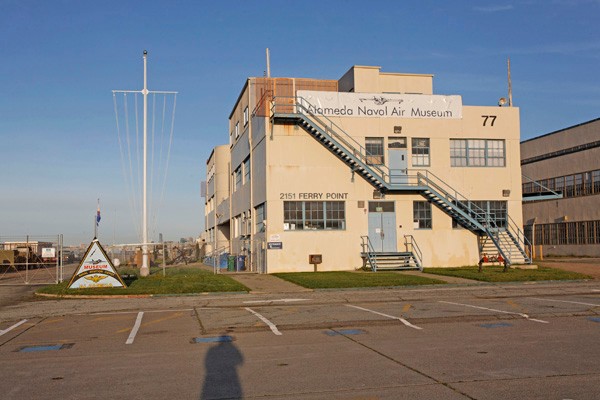
Map of Alameda Point. Note the nearby location of USS Hornet, a World War II-era aircraft carrier now berthed at one of the NAS's former docks--where she would have been docked during her years of service.
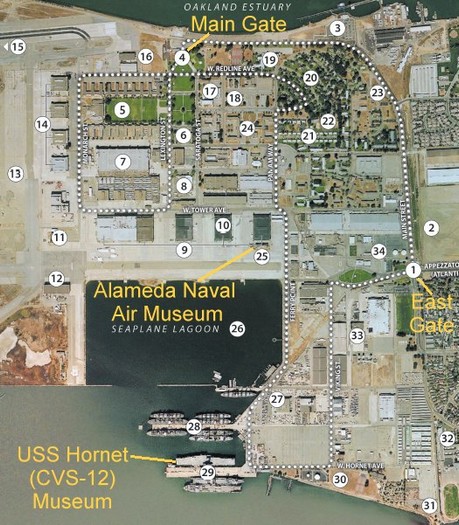
Exhibits include photographs, documents, clothing, and a variety of other historic insights to life and duty at the Naval Air Station in its heyday.

Official emblem of the Naval Air Station, circa 1947 (NHHC).
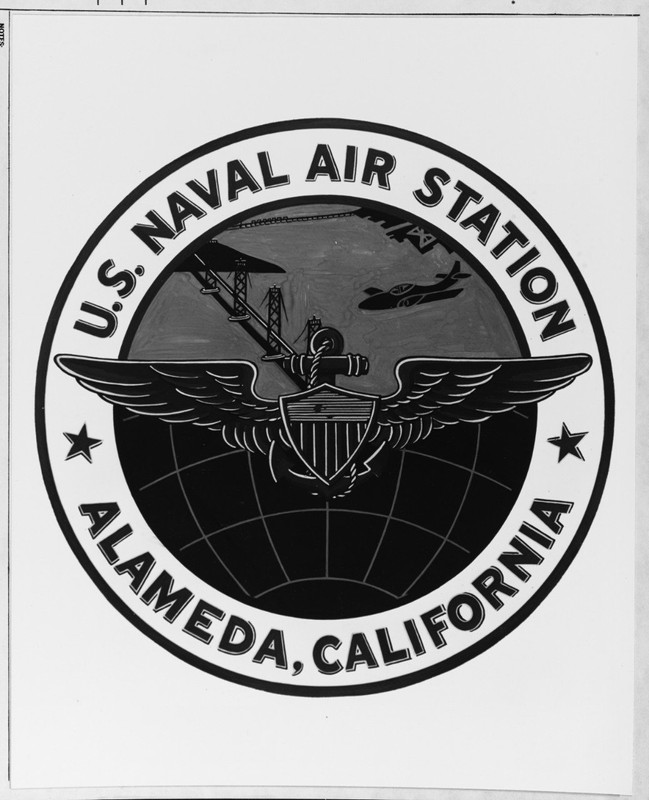
Four aircraft carriers docked for service at NAS Alameda during World War II: USS Saratoga (CV-3); USS Enterprise (CV-6); USS Hornet (CV-12) and USS San Jacinto (CVL-30) (NHHC).
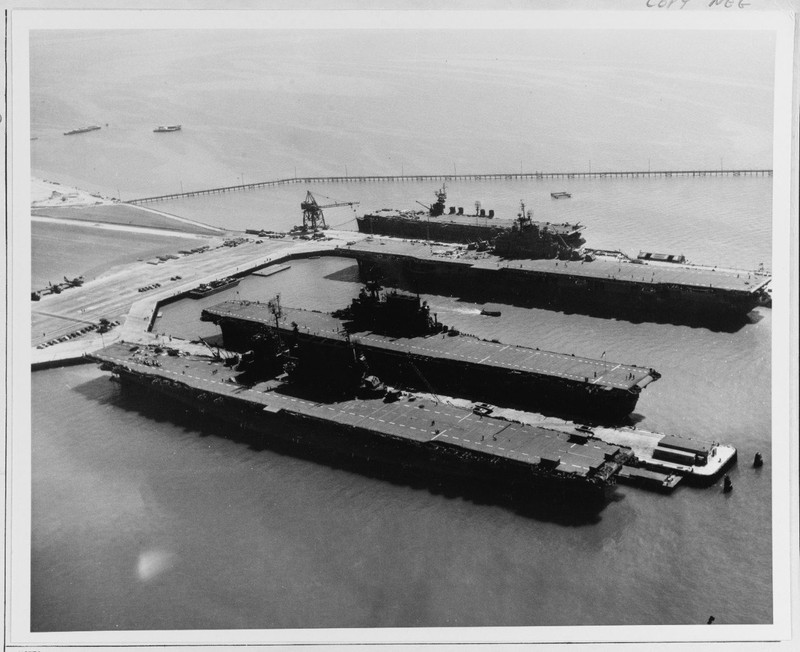
A detail of NAS Marines ranked before the station's flag at half mast a few days after the death of President Franklin Roosevelt, 15 April 1944 (NHHC).
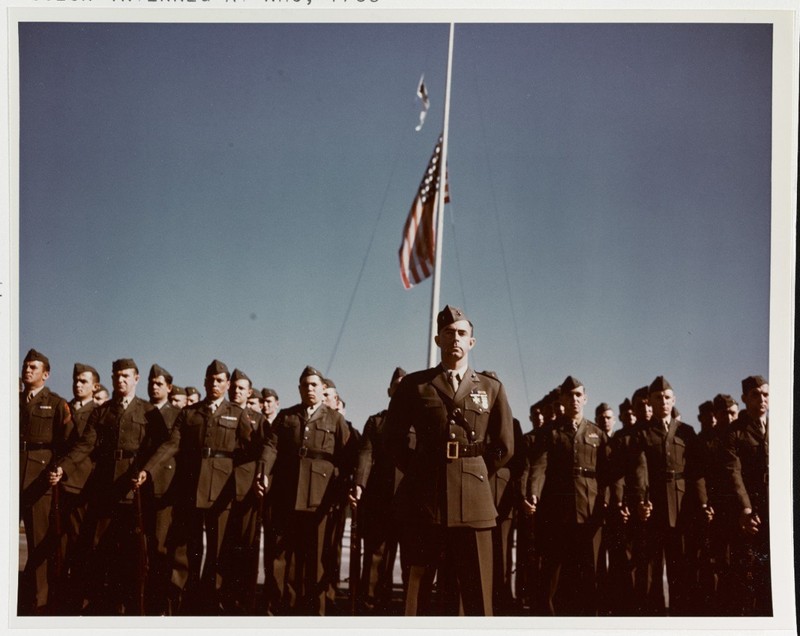
Commander R.L. Smith inspects the NAS's complement of WAVES with Lieutenant Jean Fontain, USN(W) in August 1949 (NHHC).
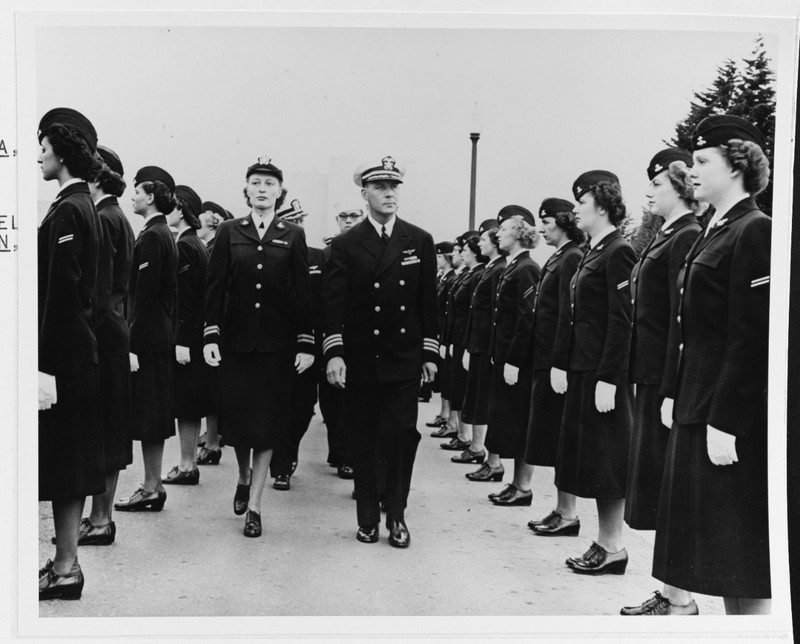
The first westward flight of the China Clipper, Pan-Ams trans-Pacific mail and passenger service, flies past the incomplete Golden Gate Bridge in 1935. The China Clipper was moved to Treasure Island during World War II.
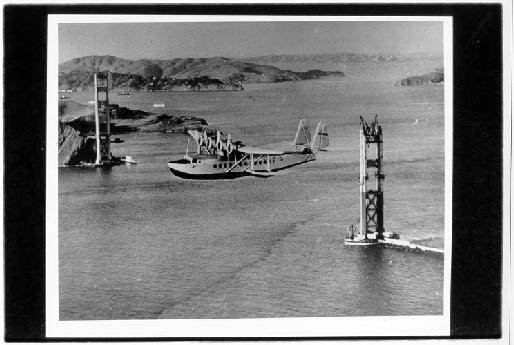
President William J. Clinton greets sailors and personnel at the station in 1993, a few months after the base's imminent closure was announced. The NAS's "disestablishment" was effected in 1997.
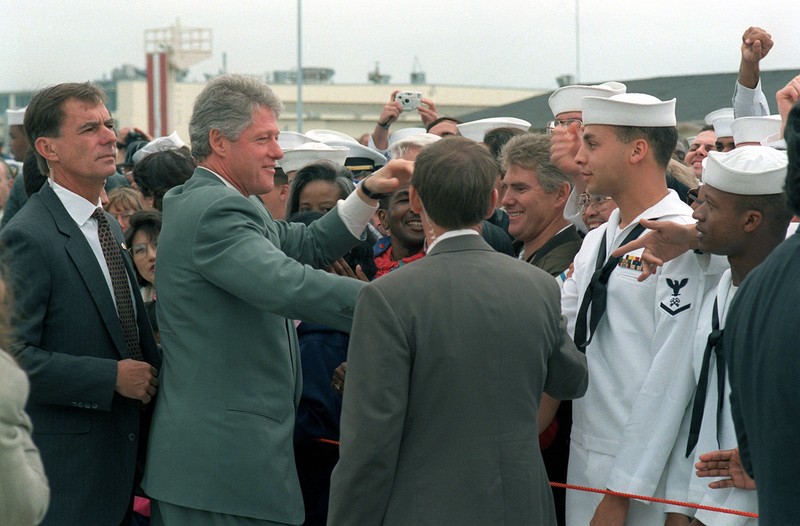
Backstory and Context
Text-to-speech Audio
The tip of Alameda Island known as Alameda Point already had claim to historical significance before construction on a civilian airfield began in 1927: a pre-existing pier there had served as the western terminus for the Transcontinental Railroad. Since the early 1900s, however, several bids to gain the Navy’s attention to develop the site had failed. In 1930, the Army Corps of Engineers at last built Benton Field on the newly filled land, and by 1935 Pan-American Airlines was operating the “China Clipper,” the first airborne trans-Pacific mail and passenger service, from Alameda Point.
Rapid change seemed to be coming to the airfield in 1936, when President Franklin Roosevelt’s administration mandated a huge wave of naval construction. That June, the city of Alameda deeded the property to the U.S. Navy for the price of one dollar, and the Army departed Benton Field four months later. But funds were short: construction didn’t begin until 1938 and the minimal facilities of the base were not officially commissioned until 1 November 1940.
The Japanese attack on Pearl Harbor on 7 December 1941, however, put all bases on the West Coast on high alert--and many had to handle extra traffic due to damaged airfields at Pearl. Initial construction had provided for two carrier air groups, five seaplane squadrons, two utility squadrons, and an Assembly and Repair Department, but soon new activity was afoot: on 15 May 1942, sixteen B-25 bombers arrived at NAS Alameda with their mission commander, Colonel James Doolittle, who would soon be awarded the Medal of Honor for a daring, one-way bombing raid on the Japanese capital of Tokyo.
Multiple training schools for flight and radar-related activities were added over the course of the war, as the installation ballooned from 300 acres to 878 (over 2,800 acres when counting submerged areas surrounding the base) and it became the headquarters for a network of smaller airfields scattered around the Bay Area. In addition to ship maintenance and other activities, the NAS’s primary mission was to service aircraft from the Navy’s “flattops”--the huge aircraft carriers that had become the backbone of the Pacific War against Japan. This effort required thousands of workers, among them the new WAVES (Women Accepted for Volunteer Emergency Service), who stepped into Naval Reserve roles as men were drafted into combat zones.
NAS Alameda continued in this capacity through World War II, Korea, Vietnam, and in interwar periods--particularly as support for nuclear-powered aircraft carriers of the Navy’s Pacific Fleet. After sixty years, however, the NAS’s clock had run down. The base closed in 1997 as part of a large series of post-Cold War defense cuts during the administration of President Bill Clinton. Clinton himself visited the NAS on 1 August 1993, a few months after the announcement of its impending closure, to reassure the community of a quick environmental cleanup and bright economic future. Such a future would not arrive for nearly two more decades.
The effort to preserve the NAS’s history couldn’t wait that long. Fortunately, Alameda Naval Air Station Museum founder Marilyn York led the charge, forming a team of volunteers to convert the former air terminal into a physical museum to house artifacts, archives, and more. York had a strong connection to Alameda, as she joined the Naval Reserve early in the war as a WAVE (in addition to selling over a million dollars in war bonds), and after the armistice worked on the base for thirty years as a Journeyman Aircraft Engine Mechanic. The revitalized facility opened in 2004; York passed away in 2012, only a year before the NAS was added to the National Register of Historic Places.
Areas of the former base were used periodically for the popular television show “Mythbusters,” as the broad, flat pavement allowed dangerous tests to be carried out safely. In 2002, Warner Brothers filmed the climactic freeway chase for the blockbuster The Matrix Reloaded on large, looping set constructed specifically for the purpose at the location.
Today, the Museum continues to preserve the important legacy of the NAS, offering events, a rental space, children’s programs and more. Several attempts at redeveloping the rest of the huge facility fell short until 2015, when a plan was at last approved for mixed affordable housing and commercial space.
Sources
"History of Alameda Naval Air Station." Alameda Naval Air Station Museum. Accessed February 17, 2018. http://alamedanavalairmuseum.org/.
"Historic California Posts, Camps, Stations and Airfields: Naval Air Station, Alameda." Accessed February 17, 2018. http://www.militarymuseum.org/NASAlameda.html.
Former Naval Air Station Alameda. Base Realignment and Closure Commission. . Accessed March 12, 2019. https://www.bracpmo.navy.mil/brac_bases/california/former_nas_alameda.html.
Johnson, Chip. Alameda Naval Air Station development finally set to take off. SFGate. June 30, 2015. Accessed March 12, 2019. https://www.sfgate.com/bayarea/article/Alameda-Naval-Air-Station-development-finally-set-6356650.php.
China clipper over south tower of Golden Gate Bridge first westbound flight, November 22, 1935. 1935. Retrieved from the Digital Public Library of America, http://heritage.sonomalibrary.org/cdm/ref/collection/p15763coll2/id/3568. (Accessed March 12, 2019.)
